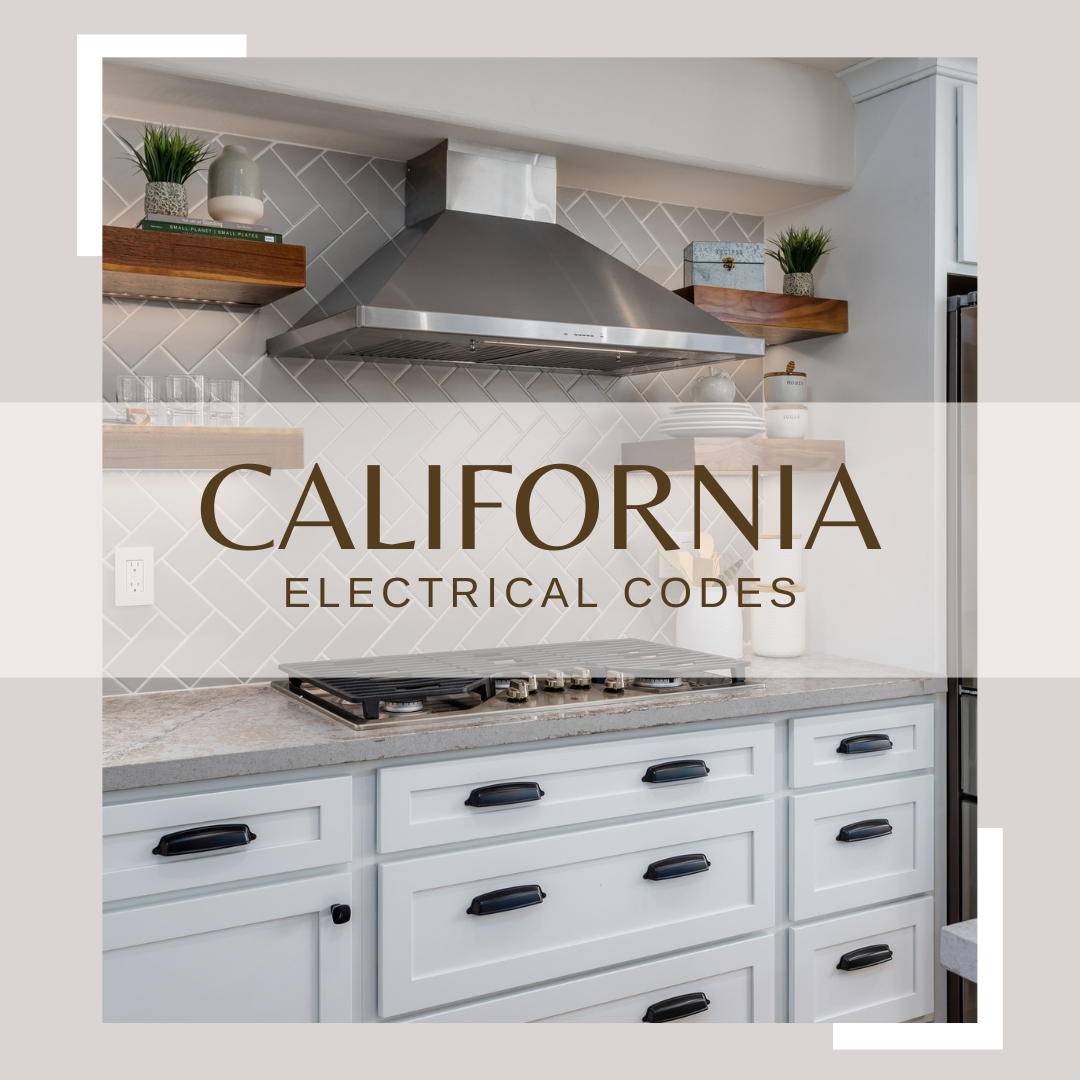By using our website, you agree to the use of cookies as described in our Cookie Policy
The Boss’s Daughter
California Specific Electrical Codes

Toupin Construction understands that California—the land of sunshine, surf, and, yes, some extra rules when it comes to electrical outlets—has unique electrical requirements. While the National Electrical Code (NEC) serves as the foundation, California has its own amendments and building codes that must be followed. The California Electrical Code (CEC) often aligns with the NEC but includes specific modifications to address seismic safety, energy efficiency, and the state’s eco-conscious goals.
Here’s a California-specific breakdown of electrical outlet requirements for each room, highlighting the key differences to keep in mind.
California-Specific Electrical Considerations
Before diving into the room-by-room details, here are some essential statewide regulations:
Title 24 Energy Code Compliance
California’s Title 24 Building Energy Efficiency Standards prioritize energy-efficient designs, which impact outlet placement, especially in kitchens and garages where energy use is higher.
Tamper-Resistant Receptacles (TRRs)
Tamper-resistant outlets are mandatory in all new builds and renovations, ensuring child safety by preventing foreign objects from being inserted.
Solar Readiness
New circuits should align with California’s solar readiness requirements, encouraging designs that integrate solar power systems with ease.
Seismic Considerations
In earthquake-prone areas like California, properly mounted electrical boxes are crucial. Secure installations reduce fire risks during seismic activity.
Room-by-Room Outlet Code for California
Living Rooms, Bedrooms, and Other Habitable Spaces
- Outlet Spacing: No point along a wall should be more than 6 feet from an outlet. Any wall longer than 2 feet must have at least one outlet.
- Tamper-Resistant Outlets: Mandatory for all new builds and remodels.
- AFCI Protection: All habitable spaces must use arc-fault circuit interrupters (AFCIs) to prevent electrical fires.
Kitchens
Toupin Construction emphasizes the importance of proper electrical planning in California kitchens, which require:
- Countertop Outlets: Outlets must be installed every 4 feet. Any countertop 12 inches or wider must have at least one outlet.
- GFCI Protection: Required for all kitchen outlets, including those serving countertops.
- Dedicated Appliance Circuits: Refrigerators, dishwashers, and microwaves need their own dedicated circuits, with California’s energy codes promoting Energy Star-rated appliances.
- Lighting: Kitchen outlets must be on separate circuits from lighting to meet Title 24 standards.
- Island & Peninsula Requirements: Outlets are required on any island or peninsula countertop larger than 24x12 inches.
Bathrooms
- GFCI Protection: Required for all outlets to prevent shock risks in wet areas.
- Outlet Placement: At least one outlet must be within 3 feet of the sink.
- Dedicated 20-Amp Circuit: Bathroom outlets must have a dedicated 20-amp circuit, serving no other rooms.
Hallways
- Outlet Requirements: Hallways longer than 10 feet must have at least one outlet for convenience.
Laundry Rooms
Toupin Construction follows strict electrical guidelines for laundry rooms:
- GFCI Protection: All outlets require GFCI protection.
- Dedicated Circuits: A 20-amp circuit is required for the washer. Electric dryers need a 240-volt outlet and circuit, while gas dryers require a dedicated 120-volt outlet.
Garages
- GFCI Protection: Required for all outlets.
- Minimum Outlet Requirement: At least one outlet per car bay.
- EV Chargers: Many California homes now include provisions for Level 2 electric vehicle (EV) chargers, requiring a dedicated 240-volt circuit.
- Energy Efficiency: Title 24 promotes energy-efficient lighting and outlets.
Basements
While basements are rare in California, their electrical requirements include:
- GFCI Protection: Mandatory for all outlets.
- Outlet Spacing: Finished basements follow the 6-foot spacing rule.
Outdoor Areas
California’s mild climate makes outdoor electrical safety a priority:
- GFCI Protection: Required for all outdoor outlets.
- Weatherproof Covers: Outlets must have covers that protect even when in use.
- Required Placement: At least one outlet must be installed at the front and back of the house, with decks, porches, and balconies also requiring at least one outlet if accessible from inside.
Specialty Areas
Home Offices
- Follow the 6-foot outlet spacing rule.
- Consider outlets with USB ports for convenience.
Media Rooms
- Extra outlets should be installed behind TVs or entertainment centers.
- Energy-efficient power strips or surge protectors are encouraged.
Solar Readiness
Homes planning for future solar installation should include outlets and circuits designed for easy solar panel and battery system integration.
Key Takeaways for California Homeowners
Safety First
- GFCI protection is critical in kitchens, bathrooms, garages, and outdoor areas.
- Tamper-resistant outlets are required in all living spaces.
Plan for Energy Efficiency
- Title 24 standards guide outlet and circuit placement to minimize energy waste.
Think Ahead
- With California’s focus on sustainability, homeowners should consider future needs like EV chargers and solar readiness.
Know Local Amendments
- The NEC provides a baseline, but always check with local building departments for California-specific amendments.
When in Doubt, Call a Pro
Toupin Construction advises homeowners to consult a licensed electrician familiar with California’s electrical codes when installing outlets or circuits. Ensuring compliance with Title 24 not only provides peace of mind but also enhances the safety, efficiency, and sustainability of California homes.
‹ Back






